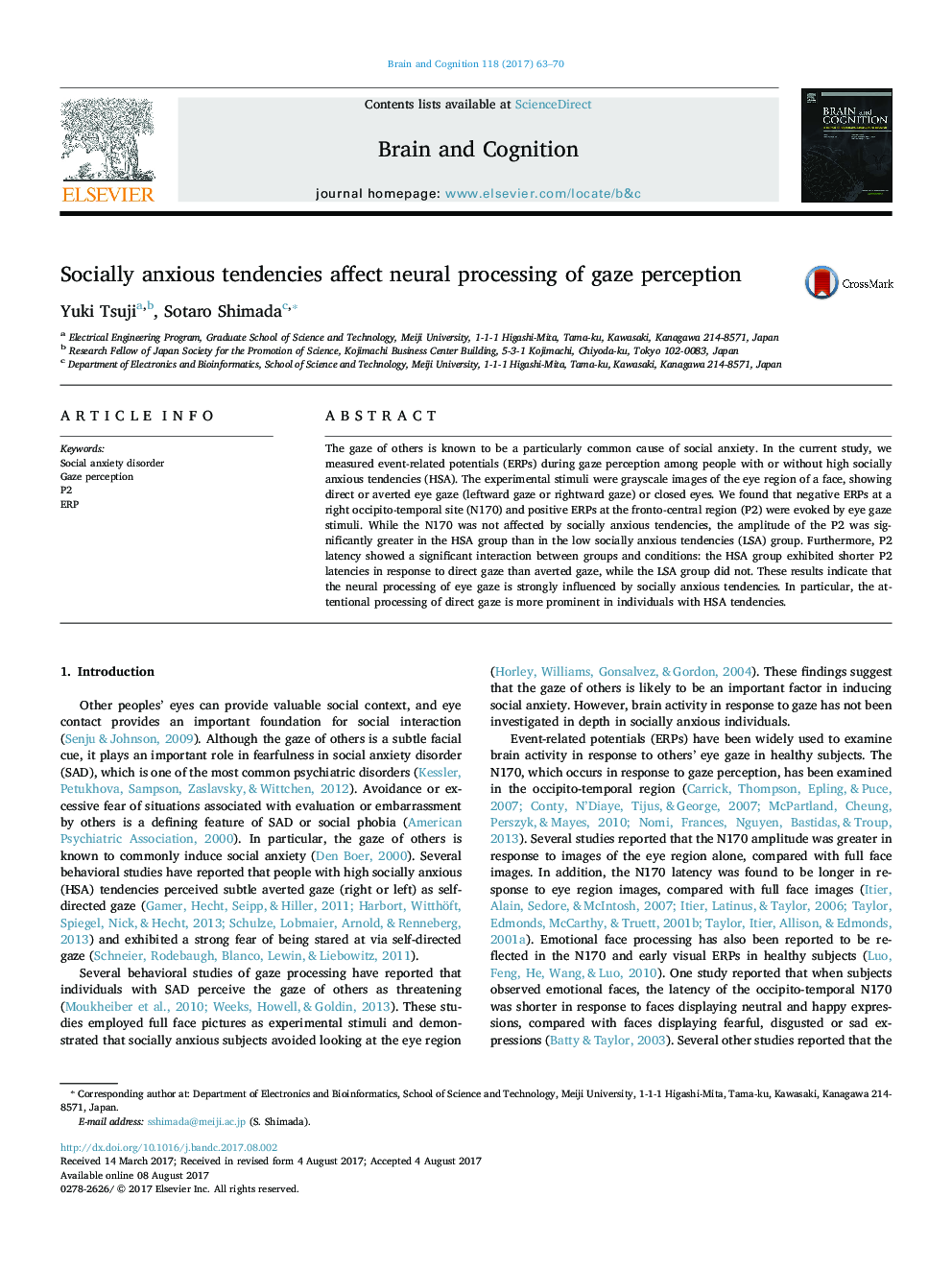| Article ID | Journal | Published Year | Pages | File Type |
|---|---|---|---|---|
| 5041081 | Brain and Cognition | 2017 | 8 Pages |
â¢We used ERPs to examine how socially anxious (SA) tendencies affect gaze perception.â¢P2 amplitude was greater in the high SA (HSA) group than in the low SA (LSA) group.â¢P2 latency was shorter for direct gaze than averted gaze stimuli in the HSA group.â¢The HSA group showed greater right insular activation for direct gaze than LSA group.â¢Eye gaze is processed more prominently in HSA individuals.
The gaze of others is known to be a particularly common cause of social anxiety. In the current study, we measured event-related potentials (ERPs) during gaze perception among people with or without high socially anxious tendencies (HSA). The experimental stimuli were grayscale images of the eye region of a face, showing direct or averted eye gaze (leftward gaze or rightward gaze) or closed eyes. We found that negative ERPs at a right occipito-temporal site (N170) and positive ERPs at the fronto-central region (P2) were evoked by eye gaze stimuli. While the N170 was not affected by socially anxious tendencies, the amplitude of the P2 was significantly greater in the HSA group than in the low socially anxious tendencies (LSA) group. Furthermore, P2 latency showed a significant interaction between groups and conditions: the HSA group exhibited shorter P2 latencies in response to direct gaze than averted gaze, while the LSA group did not. These results indicate that the neural processing of eye gaze is strongly influenced by socially anxious tendencies. In particular, the attentional processing of direct gaze is more prominent in individuals with HSA tendencies.
